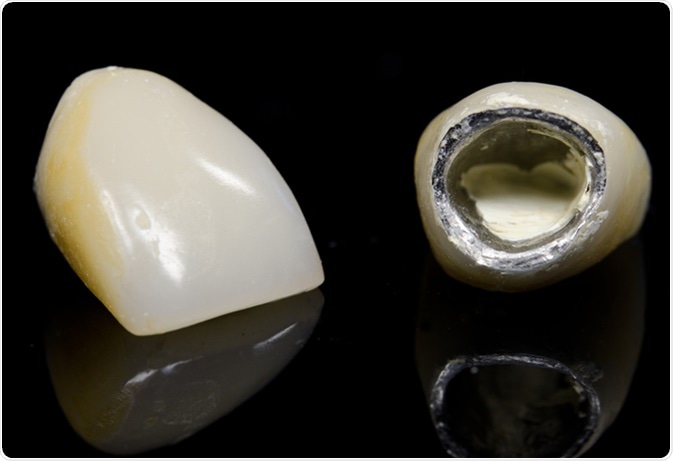There are some possible risks and complications associated with dental crowns that may affect patients even when the procedure is performed perfectly and they follow proper oral care practices.
Despite considerable advances in the technology and techniques used for dental procedures such as dental crown placement, very few dental procedures last a lifetime and complications can occasionally present.

Pain, sensitivity and discomfort
Some patients may report pain or discomfort of the teeth following a new dental crown restoration. In most cases, this improves several days or weeks after the dental crown procedure has been performed and the temporary pain can be managed with simple analgesic medications. However, some patients continue to suffer from tooth pain after the conclusion of the procedure, leading to a long-term complication.
The type of pain described by each patient may vary considerably, and may be one or more of the following:
- Sharp pain or tooth ache
- Pain or sensitivity in gums or tissues
- Thermal sensitivity to hot or cold
- Sensitivity to air
- Pain when biting
- Discomfort of the jaw muscles or joint
- Tenderness when biting
If the pain or discomfort continues, a dental examination and X-ray may be necessary to determine the cause and appropriate course of action.
Crown Detachment
In some cases, a dental crown may fall off of the abutment tooth or teeth on which it was placed. There are several reasons for which a crown may become detached, such as:
- High pressure from biting down on a hard material or food
- Extended period of time that the crown has been in place
- Dental cement washing away so that the crown becomes loose
If the dental crown of a patient becomes detached, it is essential that they seek professional dental advice as soon as possible. Failing to seek timely dental advice when a patient feels a loose crown can lead to dissolution of the cement and infection or decay of the tooth underneath. It is important that patients do not try to reattach the crown to the abutment tooth with makeshift household glues, as this can lead to severe damage to the underlying teeth and lead to the requirement of further dental work in the future.
A dentist will be able to assess the situation and make an appropriate recommendation. If the crown and abutment teeth are in good condition, the dental crown can simply be reattached in place. If there is some damage to the teeth or crown, it may be necessary to begin the dental crown procedure from the start, including reshaping the abutment teeth and making a new crown to be placed.
Porcelain Crown Damage
It is possible for a porcelain dental crown to become chipped, most often after high pressure from biting down on a hard material or food. The extent of the fracture will impact the best restorative treatment for this complication.
Smaller chips can be repaired while the crown remains in the mouth with a composite resin. Ceramic repair kits, which contain various shades of composite materials and types adhesive gels, are used for this purpose. For more severe fractures, the most appropriate restorative treatment may be to reconstruct the dental crown for placement over the original abutment tooth.
Gum Disease or Recession
Some patients may be affected by gingivitis, which involves inflammation of the gums that appear red and may bleed easily and is commonly associated with poor oral hygiene
Gingivitis can sometimes lead to gingival recession, which is a condition characterized by the retraction of the gums from the crown of the teeth. This can be aesthetically unappealing and, in severe cases, may expose part of the root of the tooth. If the restoration consists of a base metal, a dark line may appear next to the gum.
References
- https://www.animated-teeth.com/dental_crowns/t5_dental_crowns_temporary.htm
- http://www.infodentis.com/fixed-prosthodontics/risks-and-complications.php
- http://www.medhalt.com/procedure/dental-crown
- https://www.ncbi.nlm.nih.gov/pubmed/12869972
- https://www.ncbi.nlm.nih.gov/pubmed/9180403
Further Reading
- All Dental Crown Content
- Dental Crown / Tooth Cap
- Dental Crown Uses
- Procedure for Dental Crowns
- Advantages and Disadvantages of Dental Crowns
Last Updated: Feb 26, 2019

Written by
Yolanda Smith
Yolanda graduated with a Bachelor of Pharmacy at the University of South Australia and has experience working in both Australia and Italy. She is passionate about how medicine, diet and lifestyle affect our health and enjoys helping people understand this. In her spare time she loves to explore the world and learn about new cultures and languages.
Source: Read Full Article
